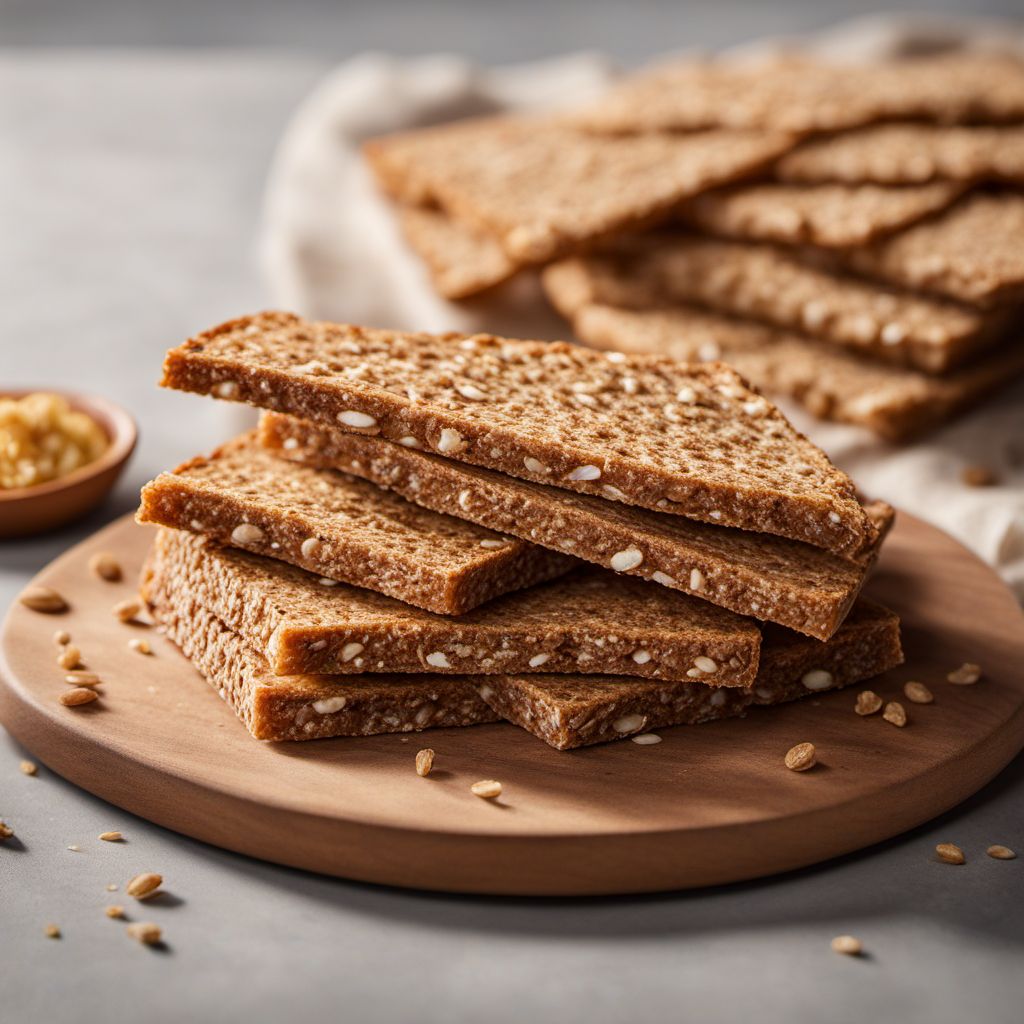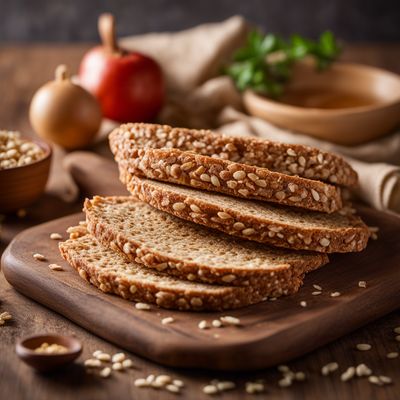
Ingredient
Crisp bread, rye wholemeal
Rustic Rye Delight: Exploring the World of Crisp Bread
Crisp bread, rye wholemeal, is a type of bread made from wholemeal rye flour, water, and salt. It is known for its thin and crispy texture, which is achieved by baking the dough until it becomes dry and brittle. The bread has a distinct earthy flavor with hints of nuttiness and a slightly sour taste. Its appearance is characterized by a light brown color and a rough, uneven surface. The texture is crunchy and brittle, making it perfect for spreading toppings or enjoying on its own.
Origins and history
Crisp bread has a rich history that dates back to ancient times. It originated in Scandinavia, where it was a staple food due to its long shelf life and nutritional value. The dry and brittle nature of crisp bread made it ideal for long journeys and harsh climates. Over time, it spread to other parts of Europe and became popular in countries like Sweden, Norway, and Finland. Today, crisp bread is enjoyed worldwide and has become a beloved part of many cultures.
Nutritional information
Crisp bread, rye wholemeal, is a nutritious choice, packed with fiber, vitamins, and minerals. It is low in fat and calories, making it a great option for those watching their weight. Additionally, it is a good source of complex carbohydrates, providing sustained energy throughout the day.
Allergens
Crisp bread, rye wholemeal, may contain gluten, making it unsuitable for individuals with gluten intolerance or celiac disease.
How to select
When selecting crisp bread, rye wholemeal, look for packages that are tightly sealed to ensure freshness. Check the expiration date to ensure it is not expired. Inspect the bread for any signs of moisture or mold. Opt for brands that use high-quality wholemeal rye flour for the best flavor and nutritional value.
Storage recommendations
To maintain the freshness and crispness of crisp bread, rye wholemeal, store it in an airtight container or resealable bag in a cool, dry place. Avoid exposing it to moisture, as it can cause the bread to lose its crunchiness. Properly stored, crisp bread can last for several months.
How to produce
While it is challenging to produce crisp bread, rye wholemeal, at home due to the specific baking process required, amateur bakers can experiment with making their own versions using wholemeal rye flour, water, and salt. However, achieving the same thin and crispy texture may be difficult without specialized equipment.
Preparation tips
Crisp bread, rye wholemeal, can be enjoyed in various ways. It is commonly used as a base for open-faced sandwiches, topped with ingredients like smoked salmon, cream cheese, or pickled herring. It can also be broken into smaller pieces and used as a crunchy accompaniment to soups or salads. For added flavor, lightly toast the crisp bread before serving to enhance its nuttiness.
Culinary uses
Crisp bread, rye wholemeal, is a versatile ingredient that can be used in a variety of culinary applications. It is commonly used as a healthier alternative to traditional bread in sandwiches or as a base for canapés. Its crunchy texture also makes it a great substitute for crackers or chips when served with dips or spreads. Additionally, it can be crumbled and used as a topping for salads or added to soups for an extra crunch.
Availability
Crisp bread, rye wholemeal, is commonly available in Scandinavian countries such as Sweden, Norway, and Finland. It can also be found in specialty stores or international food markets in other regions.
More ingredients from this category
Recipes using Crisp bread, rye wholemeal » Browse all

Swedish Caviar Toast
Savory Delight: Swedish Caviar Toast with a Twist

Bocadillo de Queso with a Twist
Savory Spanish Cheese Sandwich

Danish-style Stuffed Poultry Delight
Savor the Danish Delight: A Festive Stuffed Poultry Extravaganza

Dutch-Inspired Caesar Salad
Tulip Caesar Salad: A Dutch Twist on a Classic American Dish

Pembrokeshire-inspired Chistorra Sandwich
Savor the Flavors of Pembrokeshire with this Chistorra Delight

Zuppa alla Canavese
Savory Onion and Bread Soup: A Taste of Canavese

Pearà Burger
The Ultimate Pearà Burger: A Fusion of Italian Comfort and Fast Food Delight

Frantoiana - Tuscan Vegetable and Bread Soup
Tuscan Harvest Soup: A Hearty Delight of Fresh Vegetables and Crusty Bread

Trześniewski Brötchen - Austrian Open-faced Sandwiches
Savory Delights: Austrian Open-faced Sandwiches with a Twist

California-style Leberkäse
Sunshine Delight: California-inspired Leberkäse

Western Saharan Paomo
Savory Bread Soup: A Taste of Western Sahara

Bruschetta Romana with Tomato and Basil
Sun-Kissed Delight: Tomato and Basil Bruschetta Romana
